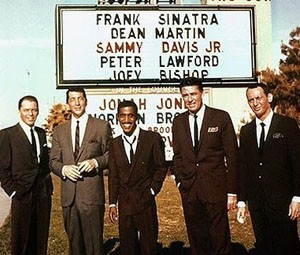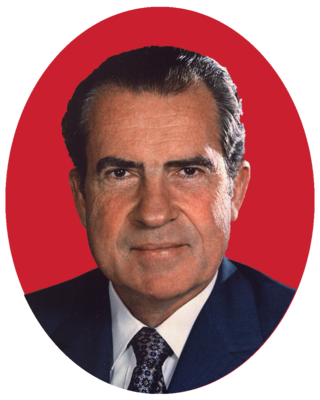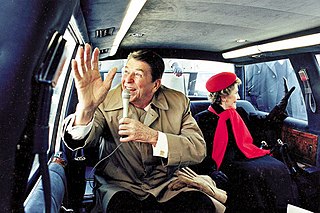
Francis Albert Sinatra was an American singer and actor. Nicknamed the "Chairman of the Board" and later called "Ol' Blue Eyes", Sinatra was one of the most popular entertainers of the 1940s, 1950s, and 1960s. He is among the world's best-selling music artists with an estimated 150 million record sales.

The 1988 United States presidential election was the 51st quadrennial presidential election held on Tuesday, November 8, 1988. The Republican nominee, incumbent Vice President George H. W. Bush, defeated the Democratic nominee, Governor Michael Dukakis of Massachusetts. This was the first presidential election since 1948, and the most recent to date, in which a party won more than two consecutive presidential terms. This also remains the most recent election in which a candidate won over 400 electoral votes. Additionally, this was the last time that the Republicans won the popular vote three times in a row. Conversely, it began an ongoing streak of presidential elections that were decided by a single-digit popular vote margin.

The 1964 United States presidential election was the 45th quadrennial presidential election. It was held on Tuesday, November 3, 1964. Incumbent Democratic United States President Lyndon B. Johnson defeated Barry Goldwater, the Republican nominee, in a landslide. With 61.1% of the popular vote, Lyndon B. Johnson won the largest share of the popular vote of any candidate since the largely uncontested 1820 election, which no candidate of either party has been able to match since.

The 1968 United States presidential election was the 46th quadrennial presidential election, held on Tuesday, November 5, 1968. The Republican nominee, former vice president Richard Nixon, defeated both the Democratic nominee, incumbent vice president Hubert Humphrey, and the American Independent Party nominee, former Alabama governor George Wallace.

The 1980 United States presidential election was the 49th quadrennial presidential election, held on Tuesday, November 4, 1980. The Republican ticket of Ronald Reagan and George H. W. Bush defeated incumbent Democratic president Jimmy Carter and incumbent vice president Walter Mondale in a landslide victory.

The 1984 United States presidential election was the 50th quadrennial presidential election. It was held on Tuesday, November 6, 1984. Incumbent Republican president Ronald Reagan defeated Democratic former vice president Walter Mondale in a landslide, winning 525 electoral votes and 58.8 percent of the popular vote. No other candidate in history has matched Reagan's electoral vote total. This is the most recent U.S. presidential election in which a candidate received over 500 electoral votes and the most recent time that a major party candidate failed to carry more than 100 electoral votes. This is also the most recent election in which both candidates are deceased and the last to feature a non-incumbent vice president until 2020, which saw Joe Biden win the presidency four years after leaving the vice-presidential office.

A Reagan Democrat is a traditionally Democratic voter in the Northern United States, referring to working class residents who supported Republican presidential candidates Ronald Reagan in the 1980 or the 1984 presidential elections, or George H. W. Bush during the 1988 presidential election. The term Reagan Democrat remains part of the lexicon in American political jargon because of Reagan's continued widespread popularity among a large segment of the electorate.

The Rat Pack was an informal group of entertainers, the second iteration of which ultimately made films and appeared together in Las Vegas casino venues. They originated in the late 1940s and early 1950s as a group of A-list show business friends, such as Errol Flynn, Nat King Cole, Mickey Rooney, Frank Sinatra and others who met casually at the Holmby Hills home of Humphrey Bogart and Lauren Bacall. In the 1960s, the group featured Frank Sinatra, Dean Martin, Sammy Davis Jr., Joey Bishop, and Peter Lawford, among others. They appeared together on stage and in films in the 1950s and 1960s, including the films Ocean's 11, and Sergeants 3; after Lawford's expulsion, they filmed Robin and the 7 Hoods with Bing Crosby in what was to have been Lawford's role. Sinatra, Martin, and Davis were regarded as the group's lead members after Bogart's death.

Peter Sydney Ernest Lawford was an English-American actor.

In American politics, the Southern strategy was a Republican Party electoral strategy to increase political support among white voters in the South by appealing to racism against African Americans. As the civil rights movement and dismantling of Jim Crow laws in the 1950s and 1960s visibly deepened existing racial tensions in much of the Southern United States, Republican politicians such as presidential candidate Richard Nixon and Senator Barry Goldwater developed strategies that successfully contributed to the political realignment of many white, conservative voters in the South who had traditionally supported the Democratic Party. It also helped to push the Republican Party much more to the right relative to the 1950s.

The 1968 Republican National Convention was held at the Miami Beach Convention Center in Miami Beach, Dade County, Florida, from August 5 to August 8, 1968, to select the party's nominee in the general election. It nominated former Vice President Richard M. Nixon for president and Maryland Governor Spiro T. Agnew for vice president. It was the fourth time Nixon had been nominated on the Republican ticket as either its vice presidential or presidential candidate (1960). Symbolic of the South's changing political affiliation, this was the first Republican National Convention held in a prior Confederate State.

The Rat Pack is a 1998 American HBO made-for-television drama film about the Rat Pack. The movie stars Ray Liotta as Frank Sinatra, Joe Mantegna as Dean Martin, Don Cheadle as Sammy Davis, Jr., and Angus Macfadyen as Peter Lawford. Despite his membership in the Pack, Joey Bishop is given minimal screen time, while John F. Kennedy, depicted as an on-and-off friend of Sinatra's, is given a more central role.

The Democratic Party is one of two major contemporary political parties in the United States. Founded in 1828, it was predominantly built by Martin Van Buren, who assembled politicians in every state behind war hero Andrew Jackson, making it the world's oldest active political party. The party is a big tent of competing and often opposing viewpoints, but modern American liberalism, a variant of social liberalism, is the party's majority ideology. The party also has notable centrist and social democratic factions. Its main political rival has been the Republican Party since the 1850s.
The Alabama Democratic Party is the affiliate of the Democratic Party in the state of Alabama. It is chaired by Randy Kelley.

Frank Sinatra had many close relationships throughout his life. He was married four times and had at least six other notable relationships in between. He had three verified children, as well as more than one of questionable paternity.

From March 8 to June 7, 1960, voters and members of the Democratic Party elected delegates to the 1960 Democratic National Convention through a series of caucuses, conventions, and primaries, partly for the purpose of nominating a candidate for President of the United States in the 1960 election. The presidential primaries were inconclusive, as several of the leading contenders did not enter them, but U.S. senator John F. Kennedy of Massachusetts emerged as the strongest candidate and won the nomination over Lyndon B. Johnson at the convention, held from July 11 to 15 at the Los Angeles Memorial Sports Arena.

This is the electoral history of Ronald Reagan. Reagan, a Republican, served as the 40th president of the United States (1981–1989) and earlier as the 33rd governor of California (1967–1975). At 69 years, 349 days of age at the time of his first inauguration, Reagan was the oldest person to assume the presidency in the nation's history, until Donald Trump was inaugurated in 2017 at the age of 70 years, 220 days. In 1984, Reagan won re-election at the age of 73 years, 274 days, and was the oldest person to win a US presidential election until Joe Biden won the 2020 United States presidential election at the age of 77 years, 349 days.

Gallup was the first polling organization to conduct accurate opinion polling for United States presidential elections. Gallup polling has often been accurate in predicting the outcome of presidential elections and the margin of victory for the winner. However, it missed some close elections: 1948, 1976 and 2004, the popular vote in 2000, and the likely-voter numbers in 2012. The month section in the tables represents the month in which the opinion poll was conducted. D represents the Democratic Party, and R represents the Republican Party. Third parties, such as the Dixiecrats and the Reform Party, were included in some polls.

The 1980 United States presidential election in Illinois took place on November 4, 1980. All 50 states and The District of Columbia, were part of the 1980 United States presidential election. State voters chose 26 electors to the Electoral College, who voted for president and vice president. This would be the last time a Democrat failed to win more than three counties as well as the last time Rock Island County voted Republican, with the county turning sharply to the Democratic party beginning with Reagan's reelection bid and continuing through to the present day.
Ronald Reagan announced his candidacy for President of the United States on November 20, 1975. He won primaries in several states, but eventually lost the nomination to incumbent president Gerald Ford at the 1976 Republican National Convention. If Reagan had won the Republican nomination, it would have been the first time since 1968 that an incumbent president was not nominated by his party.





















